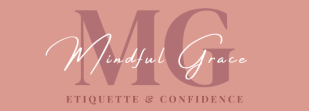
I think the short answer to this question is yes you can, but soft-shouldered jackets are easier and create a subtler look that most people prefer.
It is an interesting question though, and one that rarely gets unpacked effectively – usually all you get is the usual blunt and unequivocal opinions, with the definitive argument considered to be either a picture of a celebrity, or the evidence that ‘I wore it once and got a compliment’.
So let’s explore it with a bit more nuance.
A jacket which has a softer construction and a softer shoulder is inherently more casual, and is therefore usually a more natural partner for jeans, which are among the most casual of trousers. (I say ‘usually’ because there will always be other factors, most obviously material and colour.)
As men have struggled to adapt from the old suit-and-tie office look into something more casual, information like this has become useful, to help match jackets with jeans, chinos or other types of trousers.
Below is an example, of me in a navy tweed jacket, blue oxford shirt and blue jeans.


But just because those two go together most naturally, it doesn’t mean more structured jackets can’t work too. They just create more contrast between the two pieces, which is less subtle, a bolder look. They move along the spectrum of subtle to showy, something we invented a while ago to help understand this difference.
This bolder look is not what most men are looking for in my experience. That’s either because it doesn’t suit their personality, or perhaps because they’re trying to establish something that does work (and work easily) before they move onto more unusual looks.
That point about working easily is an important one. Because bolder looks like this are usually harder to execute – they require more aspects of the rest of the outfit to be correct. They don’t work with such a wide range of shoes, for example, or colours or textures.
A brand like Husbands in Paris makes wonderful structured jackets, and often shows them with jeans. But they are part of a particular look – the jeans are a specific cut, the shoes and boots quite a sharp style. It wouldn’t work so well with round, chunky boots – whereas a soft jacket could work with either.

I have a few structured jackets that I like wearing with jeans, but I’ve found similarly that I only like them with certain things.
I’ve attempted to provide illustrative examples here: in the top image of this article and in the image below, I’m wearing structured jackets with jeans. The top jacket is my navy hopsack from Paolo Martorano, the one below is my double-breasted navy wool from Ferdinando Caraceni.
In both cases I like the look, but I usually wear these combinations with a tonal knit underneath – in the top example, a Permanent Style Finest Polo, in the one below, a Rubato Non Pareil cotton.


If I wear these structured jackets and jeans with more normal shirts, such as a blue oxford button-down, the look doesn’t quite work.
In the image below I’m wearing the same Paolo jacket and the same jeans, but with a PS blue oxford shirt. It doesn’t look terrible, but I don’t think it looks particularly good either – if anything it looks a little ‘straight’, dull and non-harmonious.
I want to change the shoes, or the belt, perhaps to brown suede; but really the issue is the jacket: the image higher up of the soft-shouldered navy tweed looked better.

I also find that when I do wear structured jackets with jeans – even with a tonal knit or shirt – other aspects of the outfit need to be tuned in. As mentioned above, the shoes are better when they are slimmer, smaller, but there are other things too – the jeans look better with a clean finish, no turn-up, for example.
With a soft-shouldered jacket, on the other hand, the jeans could have a turn-up or not, be clean or faded. It’s a more versatile look, and so an easier one too.
This, by the way, is usually what people mean when they talk about ‘advanced’ dressing. Dressing that is harder to do because it’s more complicated, because you have to get more things right.


The black version of my Paolo Martorano jacket, above, also works with jeans. But much as I love that quite particular look, it is completely undermined if the shirt is white, or pink, or denim. It is also something very different, very showy, if the jeans are white; and it just doesn’t work at all if the jeans are blue.
There are good and bad things about these more unusual looks. On the one hand, they’re more interesting, less boring and everyday. They also tend to be more personal and expressive.
On the other, they’re harder to pull off and they date more quickly – the reason they often seem to reference a particular era is that unusual looks don’t tend to last that long.
There’s nothing wrong with either, of course, it’s just a question of understanding what impression you’re creating, whether that’s what you want, and if not how to change it.
I’m always interested in readers’ views and opinions, but I’m particularly interested today because these differences are ones I think it can be hard to articulate. If anyone else has suggestions on how to do so – the right words to unlock the impressions – do let us know.



